Part Two - Día de los Muertos

Before Death, we are all equal
Before setting out on our journey, we knew San Miguel de Allende was a must, and the loose travel itinerary we set up happened to coincide with Día de los Muertos. What a better place than SMA to experience a very important national celebration. Even with minor setbacks, hiccups, and repairs, we made it there in time to witness the multi-day event.
Arriving on the 30th of October, the cursory few hours of exploration made it evident the city was in full swing towards something big. Entry ways, balconies, and fountains were festooned with endless marigolds and papel picados, multi-color banners made from paper cutouts. The city was already buzzing with tourists, market stalls selling sugar skulls, flowers, and pan de muerto, various food vendors, musical performers, and face painting stations.
Amongst all this hustle and bustle the one thing that stood out, rather quietly, were altars (ofrendas) that had been set up in every restaurant, shop, in front of houses, and sometimes taking over the whole street. These altars, publicly displayed and similar in appearance, felt somehow very private, even intimate. Various offerings of marigolds, sugar skulls, candles, papel picados, plates of food and drinks surrounded the photo of the deceased. With a little bit of research we quickly learned the symbolic meaning behind all these gifts. Every region has their own way to set up altars, and some altars are highly personalized by including objects that were dear or important to the deceased, such as toys for kids, specific candy or drinks, etc. They were however linked by offerings of skulls to represent death, marigolds, whose scent is said to attract the soul to the altar, candles to illuminate and guide their way back, food and drink for replenishment, salt for purification, and papel picados whose cutouts are a way for the spirit to pass through.
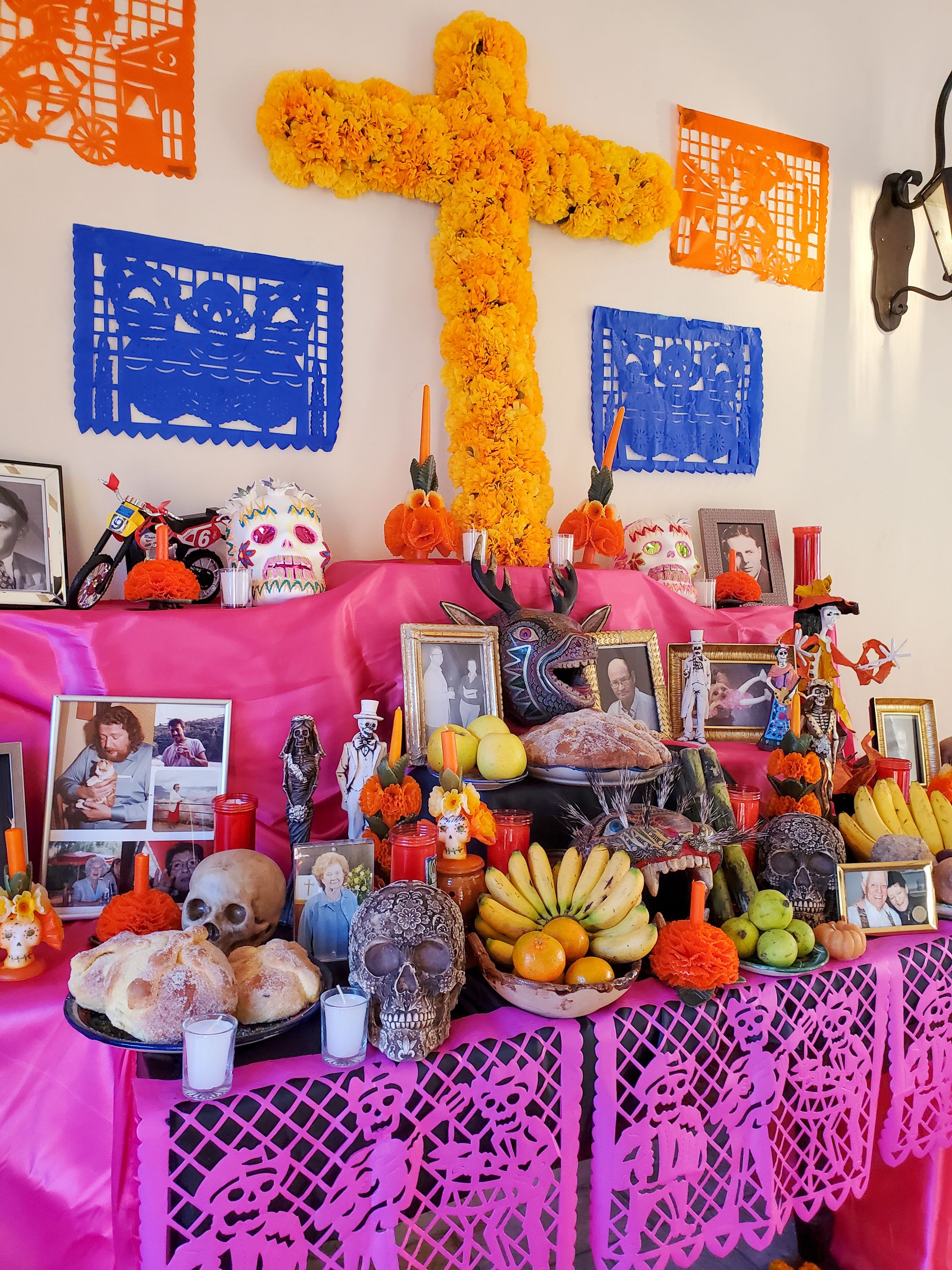
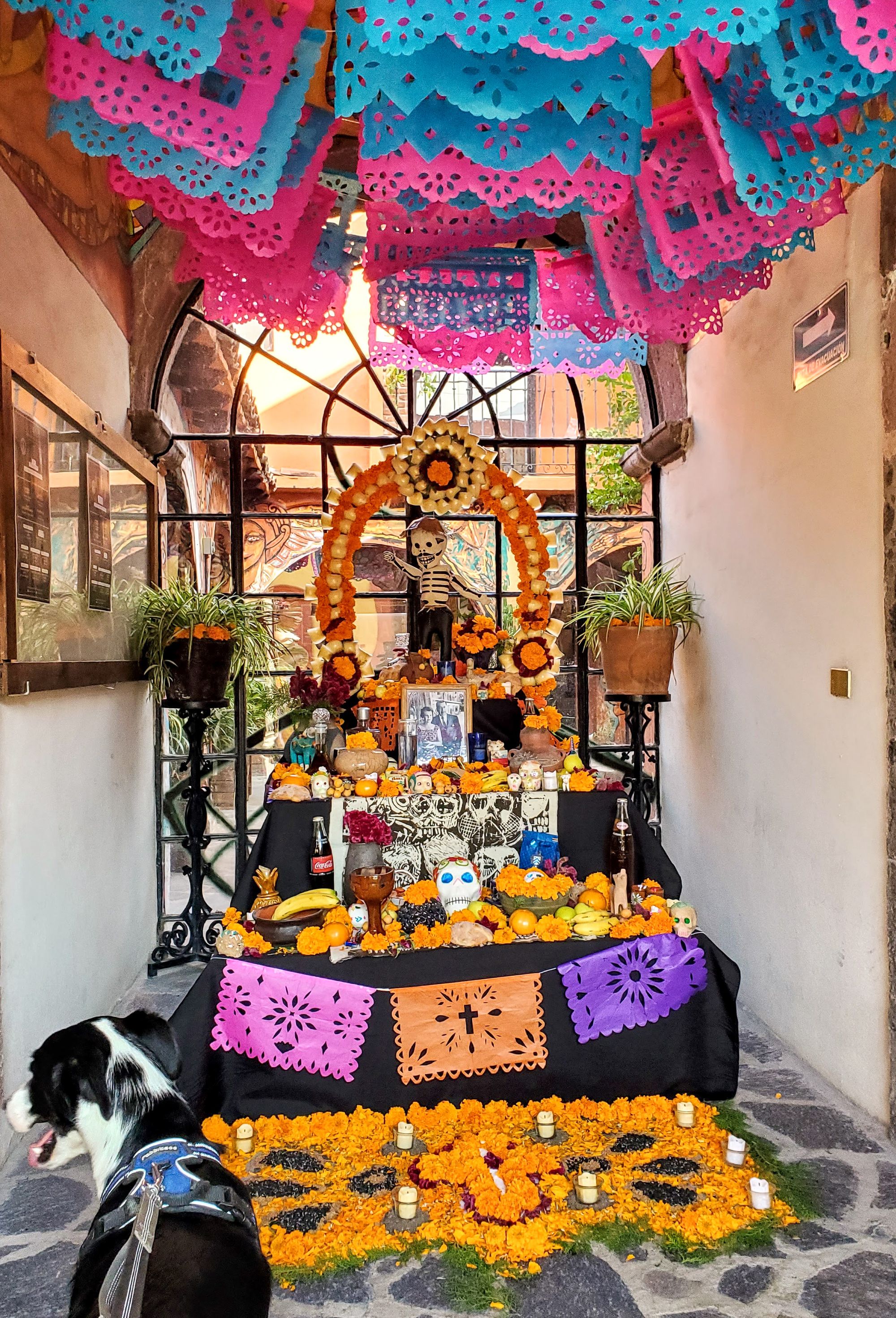
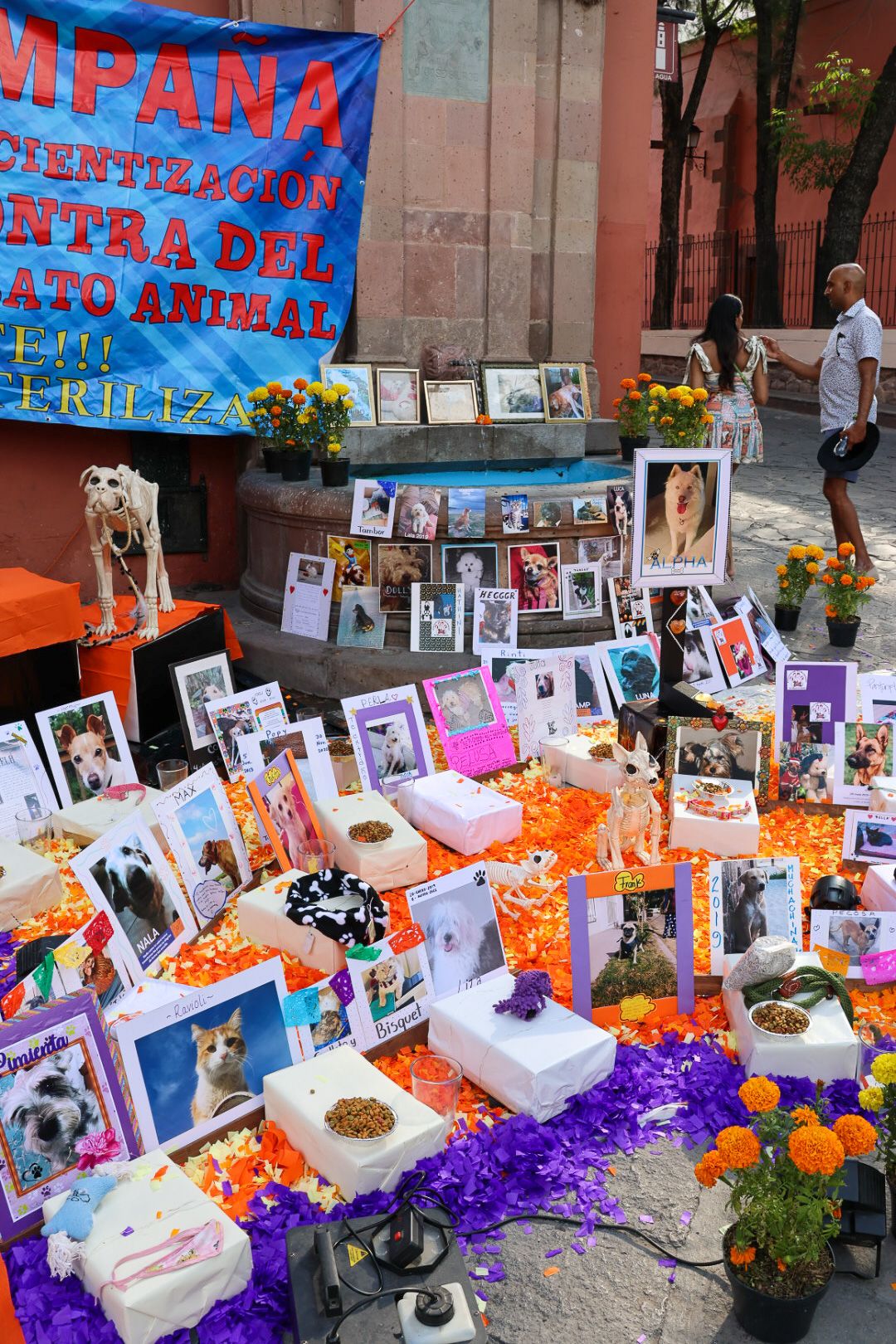
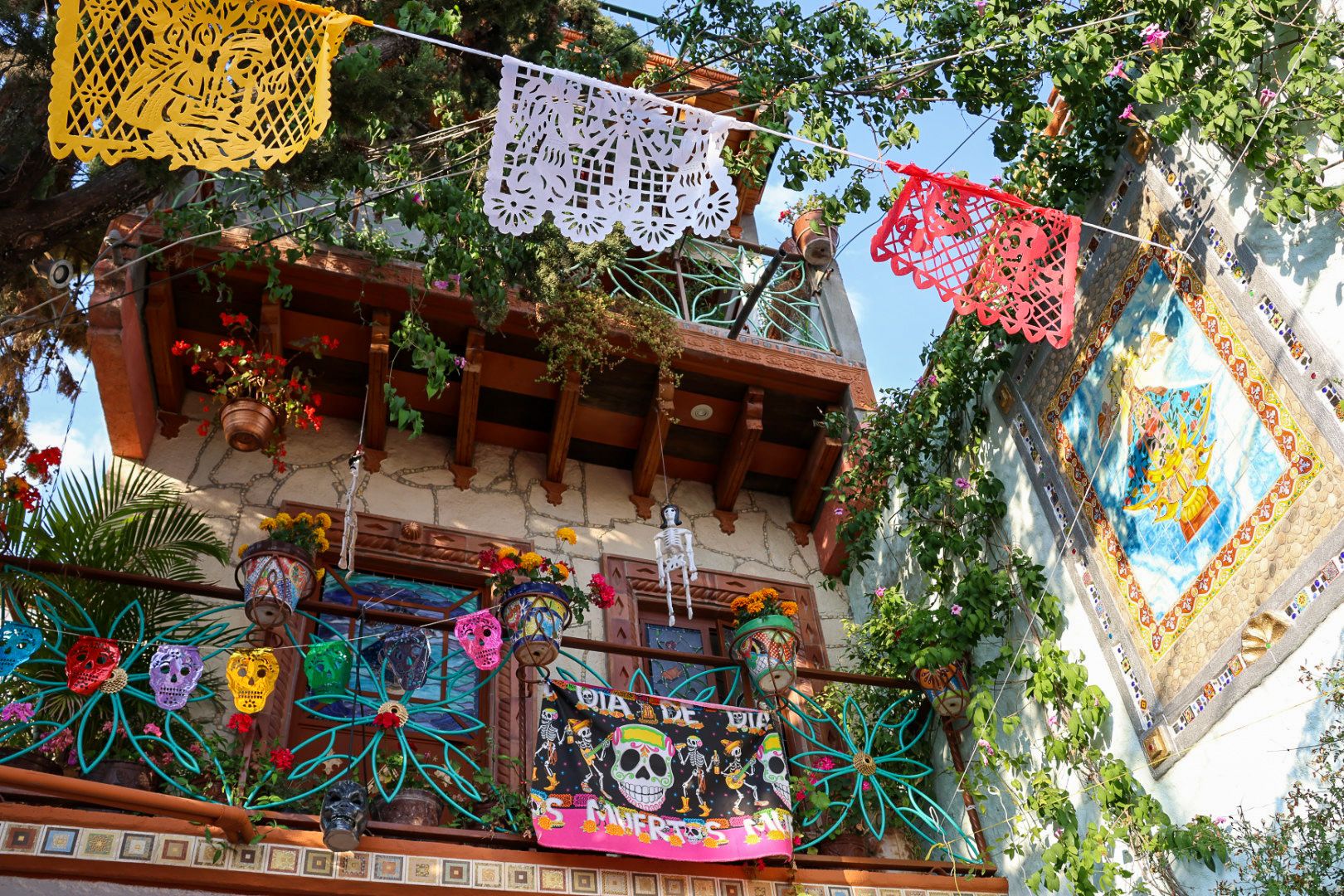
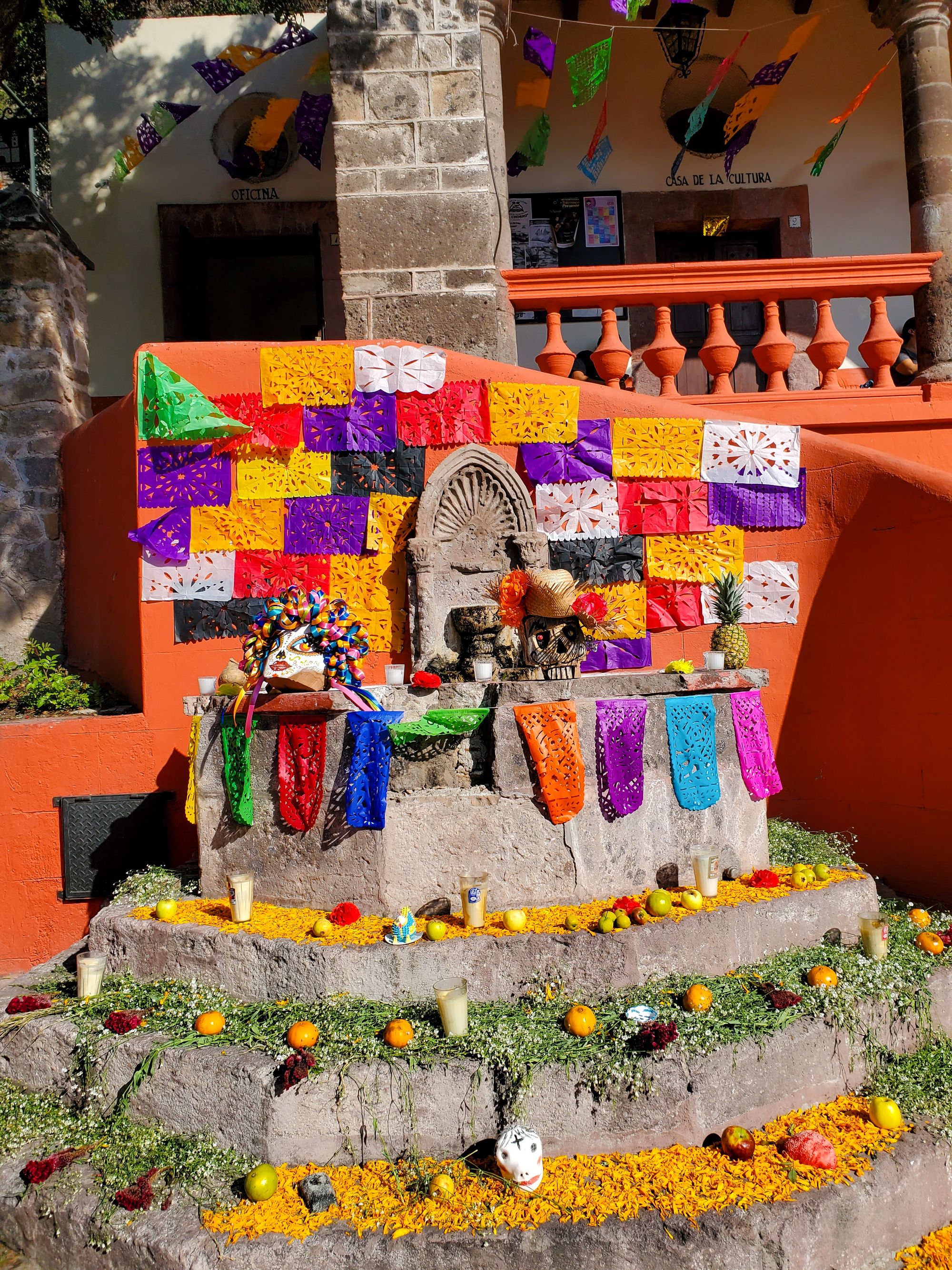
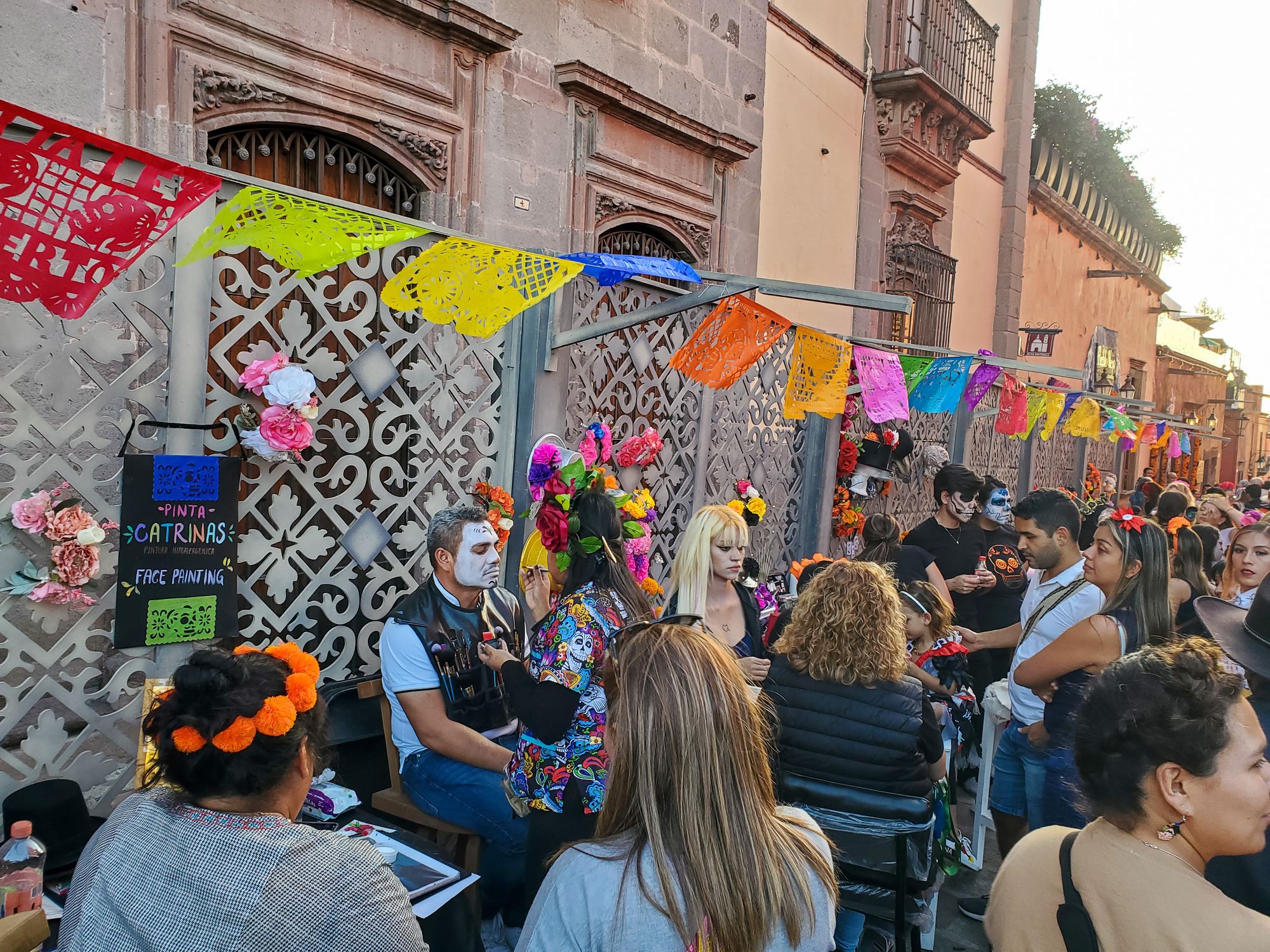
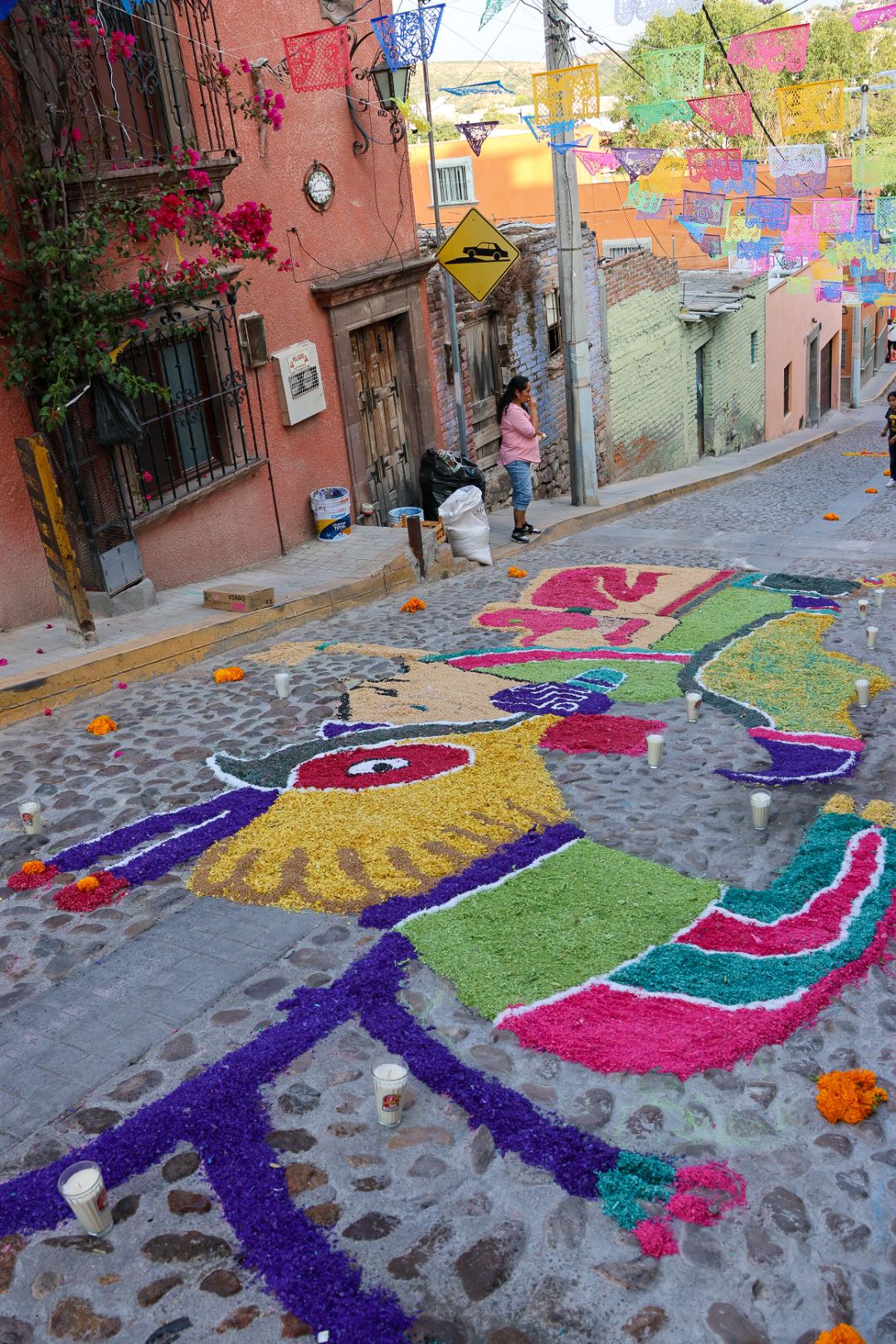
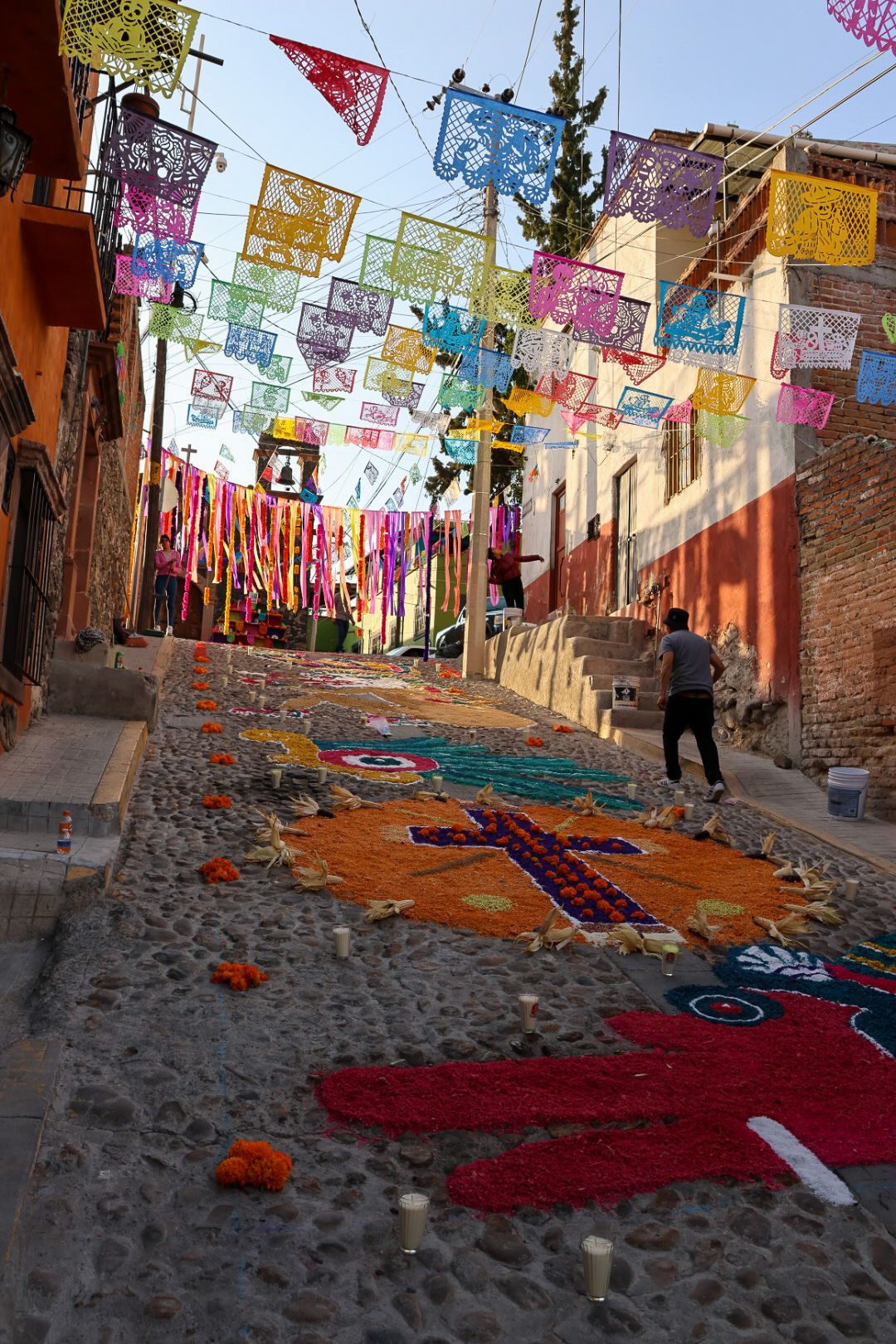
It is culturally believed here that death is part of the human experience and rather than being final, it is part of a continuum. The days of the dead are used to remember those that passed to the next realm, and to prepare for their visit through the veil. The gates of heaven open the night of October 31st, when the veil is thinnest. The grave is the first place that is thought to be visited, and therefore families spend the days before the night of the 31st cleaning the grave and setting up altars. Día de los Muertos is actually a period of celebration. All Saints Day (Día de los Inocentes), November 1st, is dedicated to the innocent, especially children, whereas All Souls Day (Día de los Muertos), marks the return of adult souls on November 2nd.
On that day we made a visit to the Cemetery of Our Lady Guadalupe (Panteón de Nuestra Señora de Guadalupe), which is located just outside the historic center. Welcomed by a busy market lining the entrance with vendors selling food, flowers, and drinks, we felt more like outsiders intruding on an intimate emotional experience deeply important to the throngs of local families paying their respects.
With little to no tourists present, it was an authentic slice into the cultural meaning of Día de los Muertos.
With a mariachi band playing in the background, and an announcer reading off names of the recently deceased, it was not a somber moment but a time for joyful remembrance. The graves were colorfully decorated with flower bouquets, flags, and other little offerings.
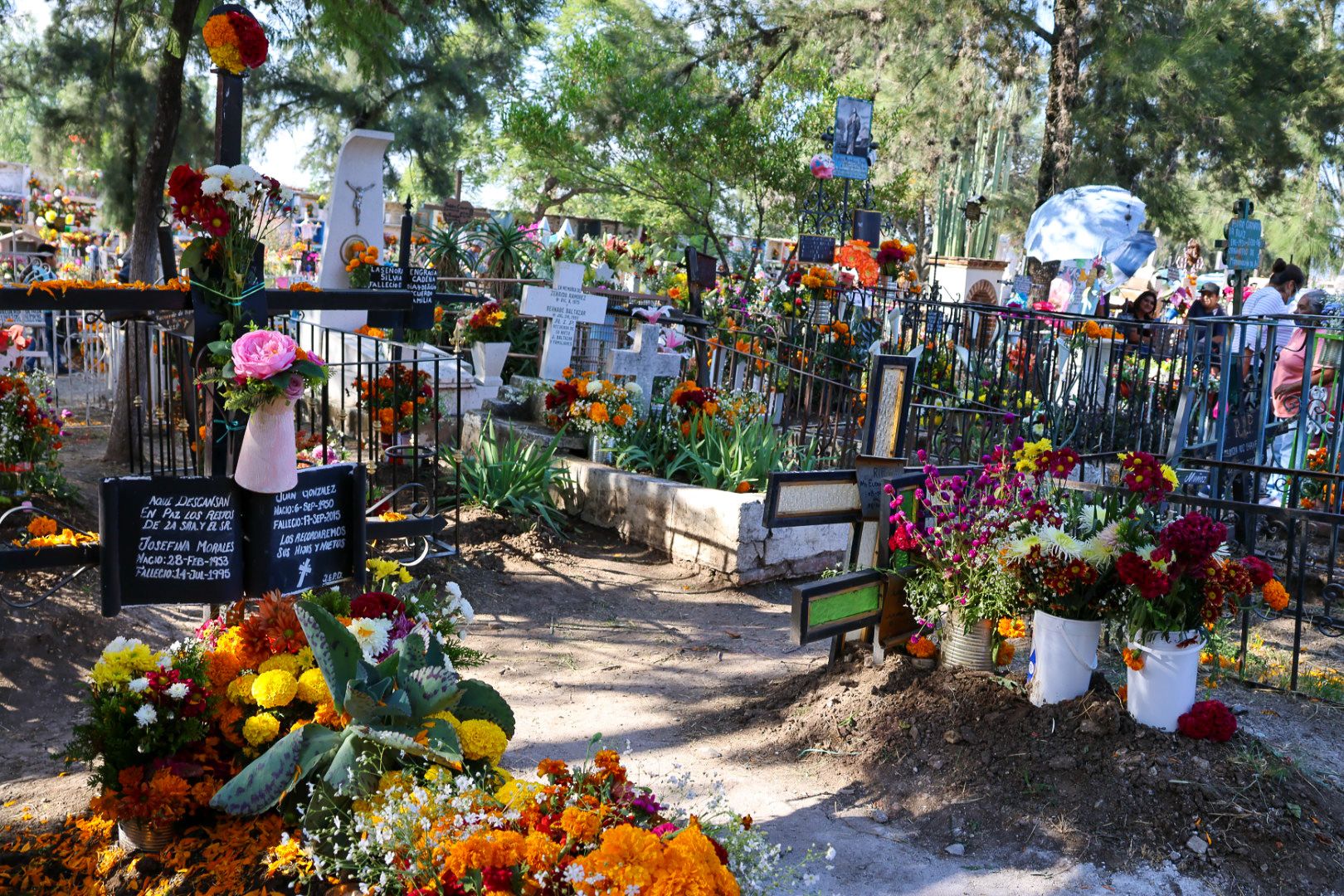
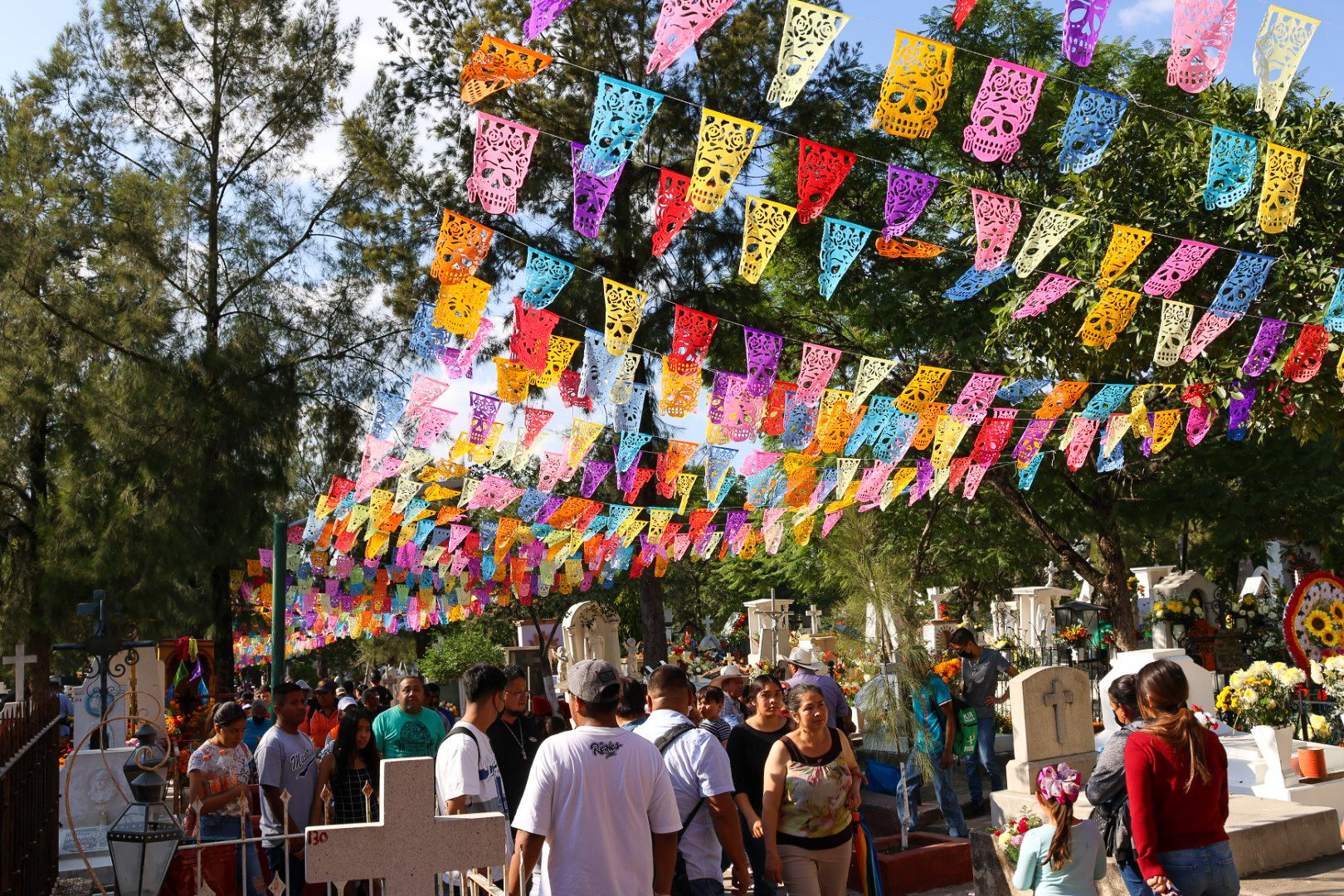
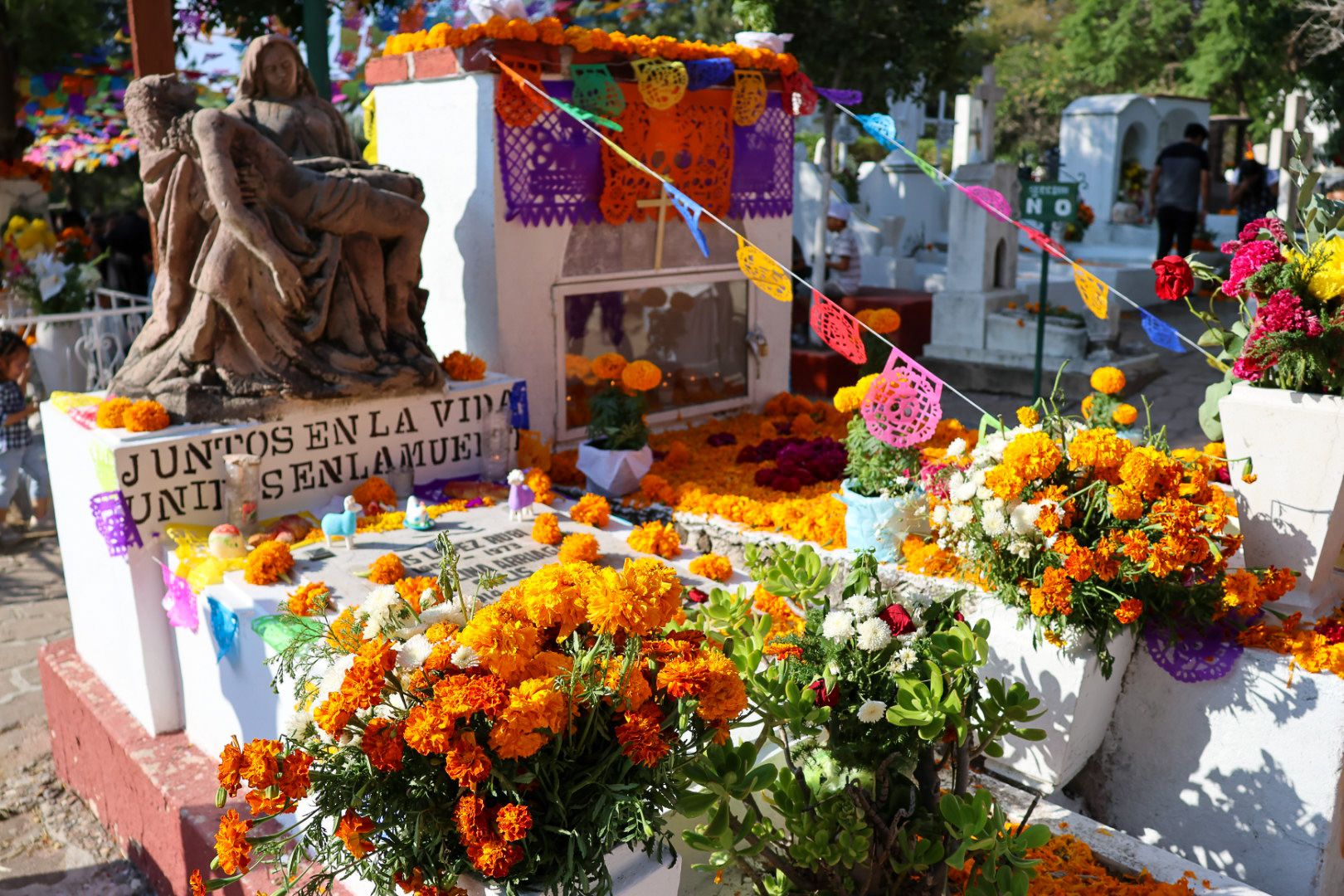
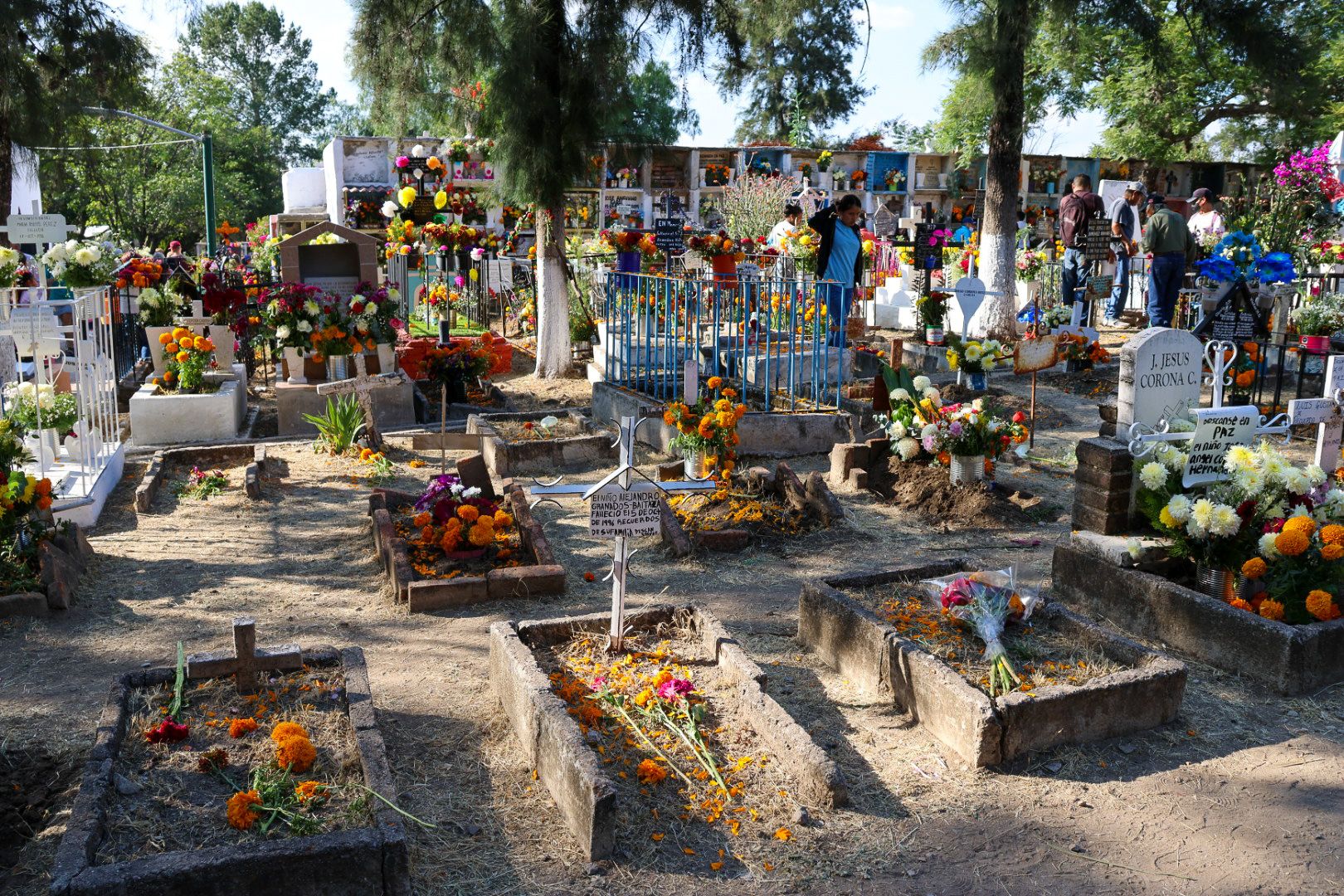
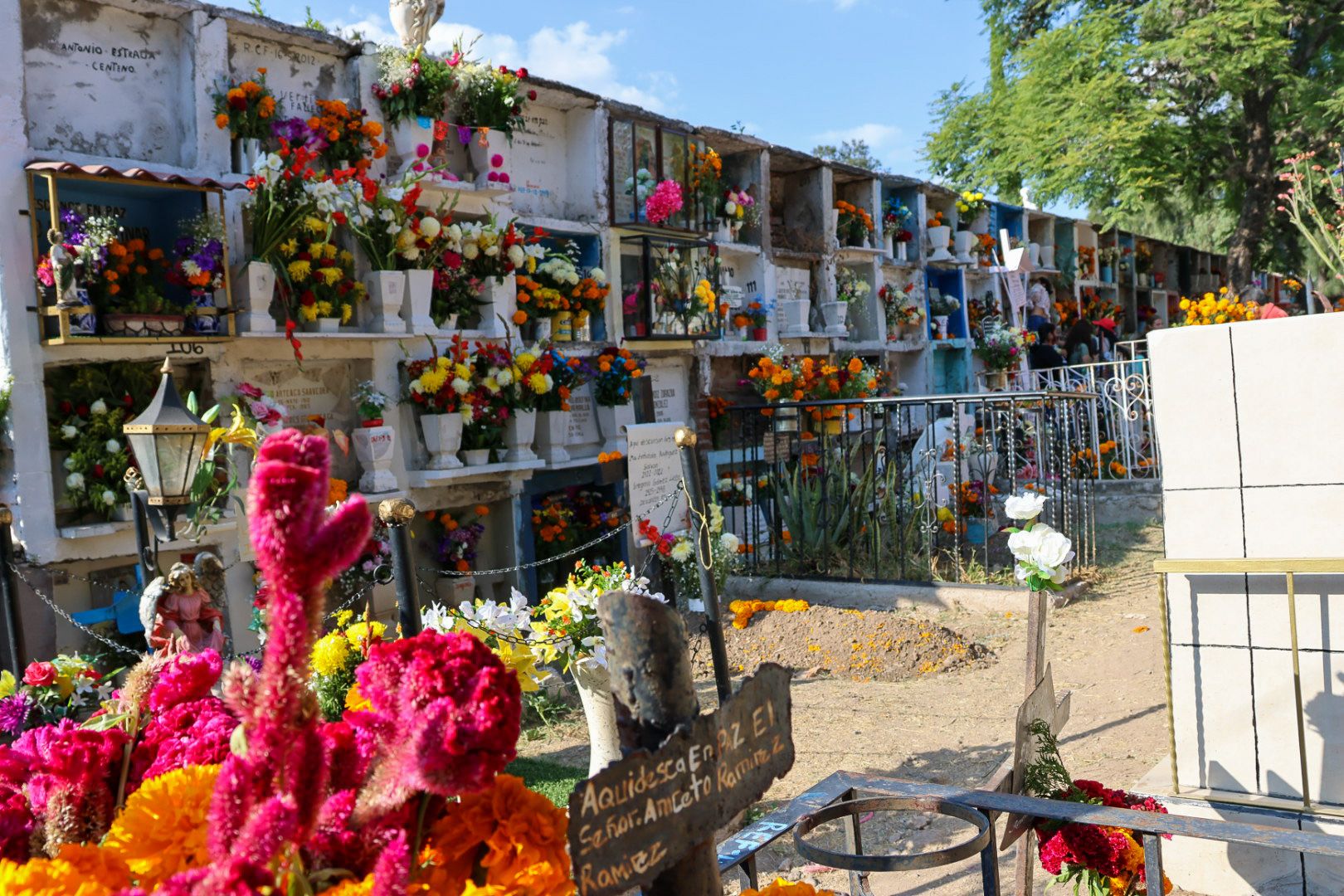
Desfile de Catrinas
A rather new twist to a pre-revolution symbol is the Parade of the Catrinas. First held on November 1st 2001, with only eight participants, the parade of the Catrinas has grown quickly to become an established spectacle with thousands of participants in cities all over Mexico. The original intention back then was to reduce the influence of Halloween on the traditional celebration of Día de los Muertos and to exhibit pride in Mexican and indigenous culture to the expatriate community of SMA.
This seems very much in the spirit of Jose Guadalupe Posada, who can be seen as the father of La Catrina, which was originally called La Calavera Garbancera - the dapper or elegant skull. Posada was a political cartoonist in the early 1900's, who was known for using skeletons to depict members of all parts of society. His message was clear: death comes for all of us, no matter your status or occupation. He also mocked the elite's obsession with European high society and criticized people's renouncement of their indigenous roots by dressing the skeleton in a French dress and a classicly fashionable hat.
“Death is democratic. At the end, regardless of whether you are white, dark, rich or poor, we all end up as skeletons.”
– José Guadalupe Posada
Revived in 1947 by Diego Rivera and his mural Sueño de una tarde dominical en la Alameda Central, La Catrina received the name by which she is known today.
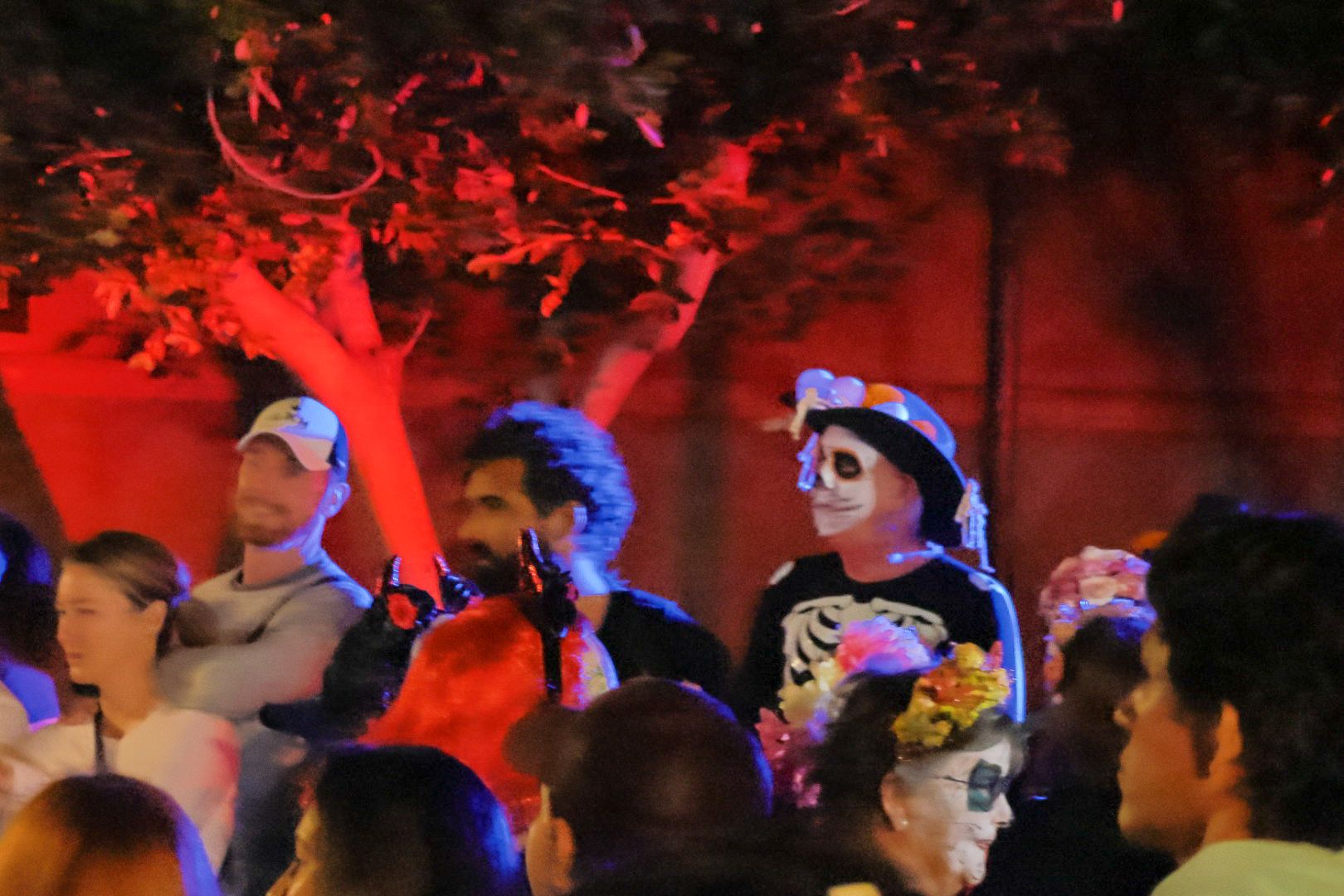
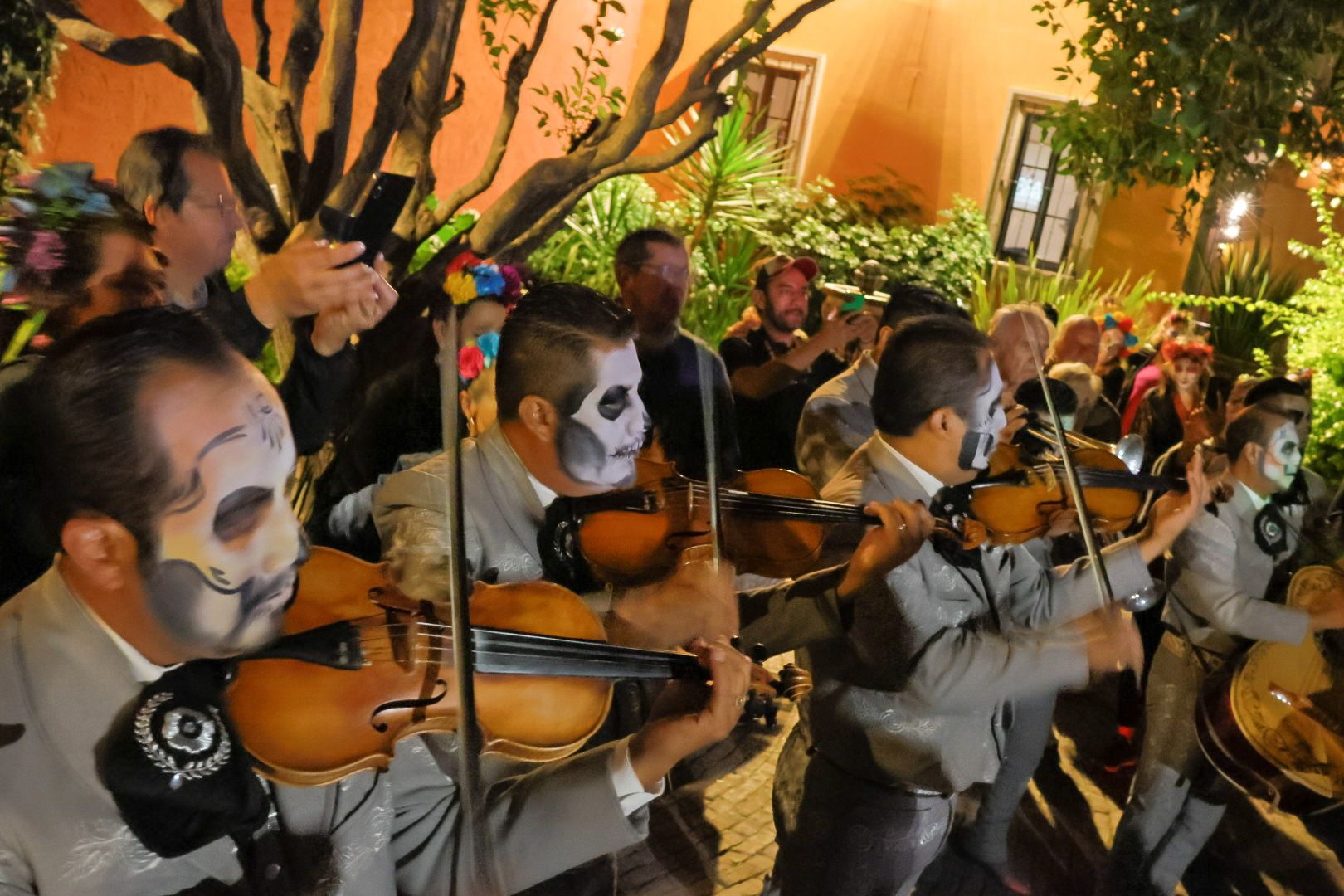


Following a stream of dressed up people, we arrived at the Rosewood Hotel, the starting point of the parade after 8pm where we were greeted by a live band. The unofficial theme of the parade is 'You are the parade', inviting everyone to join in. Unlike other highly organized parades, this made it feel both very open, but also chaotic, with no clear beginning or end. The route was planned to progress through the adjoining Parque Benito Juárez, but we didn't stay that long, already exhausted after being on our feet all day. It is hard to tell whether more than a hundred years later the participants in SMA's parade, most of which are tourists and expats, are still aware of her satirical origin story, or whether she has ironically become an appropriated figure, an excuse to put on a fancy dress and a lot of make up.

